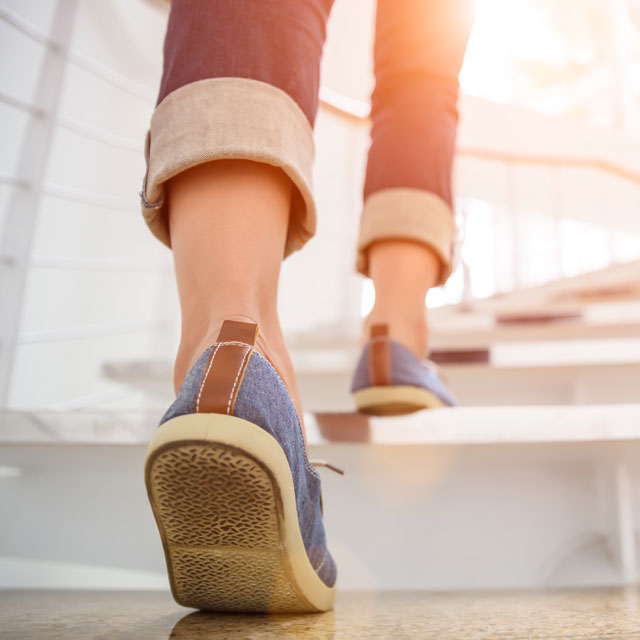Try these ways to keep your veins healthy and increase blood flow.
Many people have a sitting problem. To be specific, they sit too much. From working at a desk all day to lounging on the couch at night, a sedentary lifestyle can lead to a number of health concerns, including obesity, high blood pressure and poor circulation.
A side effect of prolonged sitting involves part of the body we don’t often think about: our vascular system.
The complex vascular system consists of multiple parts, including veins — the vessels that carry blood from the body to the heart — and arteries — the vessels that move blood from the heart back into the body.
“Blood collecting in the veins of the legs under the force of gravity may swell, may be painful, and may form blood clots where the flow is slow.”
A strong vascular system is vital for good health, and there are simple ways to help this system function effectively. This is especially true for the veins because a strong force consistently works against them.
“When we are seated or standing still, the force of gravity pushes blood down into our legs. At the same time, our veins work to push the blood back up to the heart,” said Dr. Stephen F. Daugherty, a vascular disease specialist and surgeon at the Vanderbilt Vascular Surgery Clarksville. “Blood collecting in the veins of the legs under the force of gravity may swell, may be painful and may form blood clots where the flow is slow.”
Fortunately, there are ways to combat poor circulation and keep your blood flowing efficiently.
Easy ways to increase blood flow
Elevate your legs: When we sit or stand still, our legs naturally hang down. This slows the flow of blood back to the heart and can result in tired, aching legs, swelling, pain, tenderness or a rash in the skin at the ankles due to prolonged skin injury from high pressure in the veins. Elevating your legs for a few minutes throughout the day gives the veins a break and can help reduce ankle swelling or other leg problems related to slow blood flow, Daugherty said.
Take a walk: Walking requires repeated flexing and extending of the ankles. This pumping action is essential to moving blood out of the legs and back into the heart.
Go for a ride: Pumping bike pedals also gets blood pumping through the veins. Like walking, bicycling requires repetitive ankle movements, which can improve poor circulation. Plus, it’s low impact and easy on the knees.
Pump your calf muscles: If you can’t get out for a walk or bike ride, mimicking the same ankle pumping movement is also effective. Simply raise and lower your ankles several times to help move blood out of your lower legs, or calves. This movement can be done while seated, standing or lying down.
Wear compression socks: Snug-fitting compression socks squeeze the lower leg and improve blood flow through the veins. They also help reduce leg pain and swelling, as well as lower the risk of developing a type of blood clot known as deep vein thrombosis. Talk to your doctor about the benefits of compression socks, including when and how long they should be worn.
Long-term steps for better circulation (and overall health)
In addition to the things you can do today to improve blood flow, other long-term solutions are important as well.
Drop the pounds: Carrying extra weight puts strain on your entire body, including your heart and veins. Losing weight improves circulation and overall health.
Quit smoking: Smoking damages blood vessels, causes heart disease and can lead to blood clots, among many other health concerns. While quitting may be difficult, it vastly improves your health, including your body’s ability to circulate blood effectively.

Need help?
You don’t have to live with discomfort. The experts at Vanderbilt Vascular Surgery Clarksville can help with vein problems in the legs that cause symptoms such as itching, heaviness, swelling, tiredness and sometimes, pelvic pain.

